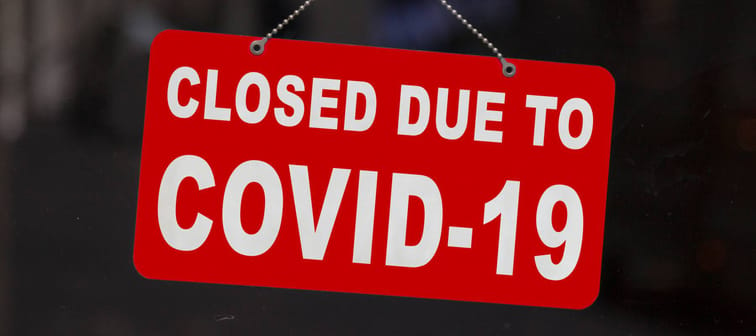Why have so few businesses applied for HASCAP?
The discrepancy between HASCAP and earlier loan programs isn’t the result of HASCAP being an inferior program, says Corinne Pohlmann, vice president of national affairs at the Canadian Federation of Independent Business.
“The reason why the CEBA loan program was very popular was because it did have a forgivable portion,” Pohlmann says, referring to the $20,000 in forgiveness originally made available to borrowers who paid their loans back by December 31, 2022. In January, the federal government extended the CEBA deadline to the end of 2023.
CEBA loans are also interest-free if they’re paid back by the deadline, a feature not offered with HASCAP.
Pohlmann says that with Canadian small businesses already carrying an average COVID-related debt of around $170,000, adding an additional HASCAP loan into the mix “is not super attractive” to all business owners.
“Businesses have to think twice about it. Even though it's a fairly attractive loan in terms of its terms, it is more debt that you're going to have to pay back,” she says. But she adds that, for some businesses, “loans that are easily accessible are better than nothing.”
Empower Your Investments with Q Trade
Discover Q Trade's award-winning platform and take control of your financial future. With user-friendly tools, expert insights, and low fees, investing has never been easier.
Start Trading TodayHow it works
The Business Development Bank of Canada (BDC), the government body managing the program, has defined “heavily impacted” as a decrease in business revenue of at least 50% in three of the eight months prior to your application. If you’ve applied for CERS or CEWS, the same revenue guidelines apply.
Previously applying for other government aid won’t disqualify you from applying for HASCAP. So long as your small to medium-sized business is based in Canada, was financially viable before the pandemic and is severely hurting for revenue, you can apply.
While BDC is overseeing the program, they can’t help you secure a loan. You’ll have to apply through one of more than 50 financial institutions that are providing the actual funds. You can only apply at one institution. Neither the BDC nor your chosen lender can grant exceptions to any of the eligibility requirements.
Applications will be accepted until March 31, 2022.
Getting approved
You’ll be asked to meet different risk rating requirements depending on how much assistance your business requires. The more you intend to borrow, the more stringent the guidelines become.
- For loans between $25,000 and $100,000, your business will have to meet what the BDC calls a “probability of default” requirement, or basic underwriting to determine if you can afford the loan.
- For loans between $100,001 and $250,000, your business will have to meet the same probability of default standards and have generated a minimum of $500,000 in gross revenues over a specific period of time: the 12 months leading up to the date of its most recent annual financial statement prior to March 1, 2020.
- For loans between $250,001 and $1 million, your business must meet a minimum debt service coverage ratio of 1.10x, including the HASCAP loan itself. Loans of this size also require your business to have had a minimum credit rating of CCC+ from Standard & Poor’s prior to March 1, 2020.
If you’re approved, you’ll have a repayment term of up to 10 years at an interest rate of 4%. When your loan begins, there’s a 12-month grace period where you won’t need to make any payments on the principal.
Your HASCAP money can only be used to continue or resume your business’s operations. You cannot use it to pay down or refinance any existing loans. If your business is a non-profit, a religious organization or has ties to the government, your application is likely to be denied. Same goes if you’ve ever been caught evading taxes.
Unexpected vet bills don’t have to break the bank
Life with pets is unpredictable, but there are ways to prepare for the unexpected.
Fetch Insurance offers coverage for treatment of accidents, illnesses, prescriptions drugs, emergency care and more.
Plus, their optional wellness plan covers things like routine vet trips, grooming and training costs, if you want to give your pet the all-star treatment while you protect your bank account.
Get A QuoteOther aid available
If a HASCAP loan isn’t right for your business, there are a few other programs still operating that might be able to help.
Ontario businesses forced to close by recent restrictions can access $10,000 in Ontario Small Business Support Grants. The province has also established the Business Costs Rebate Program to provide rebate payments for some property tax and energy costs.
In Quebec, businesses ordered to close starting on Dec. 20, 2021 can apply for help under the Assistance for Businesses in Regions on Maximum Alert (AERAM) portion of the province’s Emergency Assistance Program for Small and Medium-Sized Businesses. The loans offered through AERAM can be eligible for up to 80% forgiveness.
Federally, the Local Lockdown Program offers wage subsidies of 25% to 75% for businesses facing a drop in revenue of at least 25%. Two federal programs also exist to help affected businesses manage rent costs: the Tourism and Hospitality Recovery Program and the Hardest-Hit Business Recovery Program, both of which are set to expire on May 7, 2022.
With billions in aid already made available to Canadian businesses over the past two years, it’s unlikely the federal government will be able to justify opening the taps much further. If your business is in need of assistance, look into which programs are most suitable for your company today. They may not be around for long.
Sponsored
Trade Smarter, Today
With CIBC Investor's Edge, kick-start your portfolio with 100 free trades and up to $4,500 cash back.








